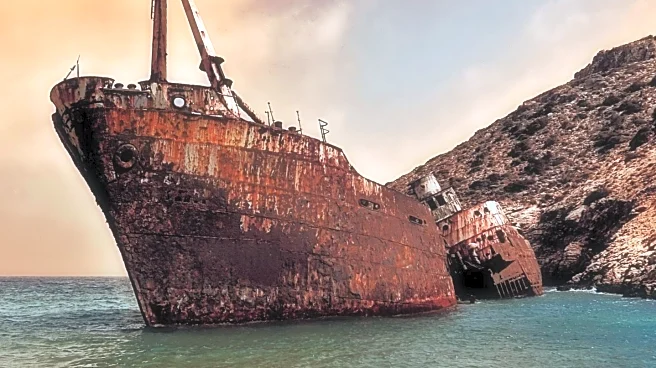What's Happening?
A shipwreck off the coast of Nahariya, Israel, long believed to be a 'Turkish ship,' has been identified as the British coal steamer Ardo, which sank in 1911. The discovery was made by maritime archaeologist
Prof. Ehud Galili and Amir Weizman during research on another shipwreck. The Ardo ran aground during a storm, resulting in the deaths of seven sailors. The captain, Ernest Howe, was later tried for negligence. The wreck, a popular dive site, was misidentified for decades due to a lack of historical research. The ship's true identity was confirmed through archival documents and court records from a 1912 British trial.
Why It's Important?
The identification of the Ardo shipwreck resolves a long-standing maritime mystery and highlights the importance of historical research in maritime archaeology. This discovery not only corrects historical records but also enriches the cultural and historical understanding of the region. The site, popular among divers, now has a more accurate historical context, potentially increasing its appeal and educational value. The case also underscores the challenges of maritime navigation in the early 20th century and the consequences of navigational errors, which remain relevant for modern maritime safety protocols.
What's Next?
With the true identity of the shipwreck established, there may be increased interest in the site from historians and divers. The findings could lead to further research into other unidentified wrecks in the region, potentially uncovering more historical insights. Additionally, the story of the Ardo may be incorporated into local educational programs and tourism initiatives, enhancing the cultural heritage of the area.
Beyond the Headlines
The misidentification of the Ardo as a 'Turkish ship' for decades reflects broader themes in historical research, where assumptions can persist without thorough investigation. This case illustrates the importance of archival research in correcting historical narratives and the role of technology in uncovering the past. The story also highlights the human element in maritime history, focusing on the lives affected by the ship's sinking and the subsequent trial of its captain.












